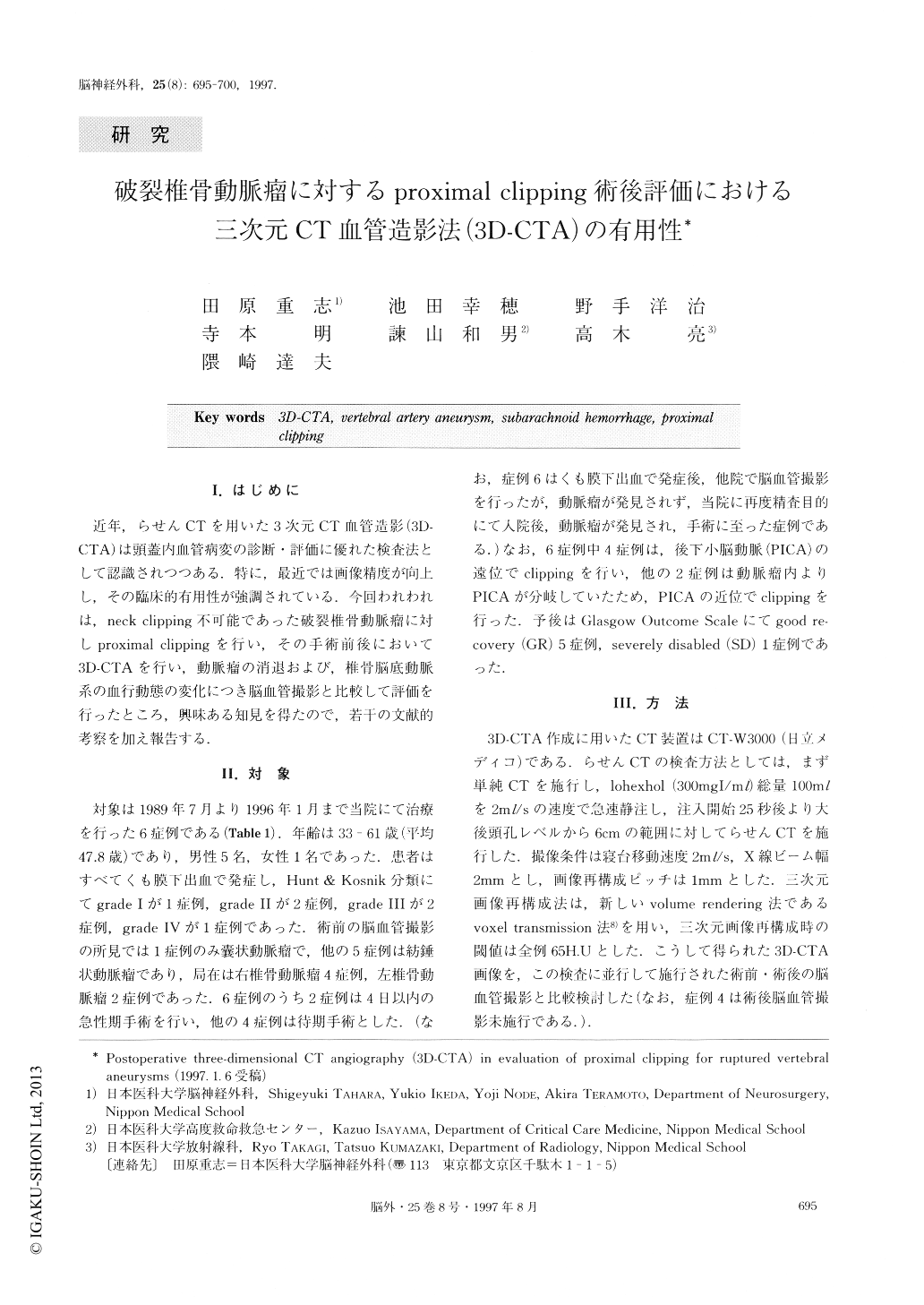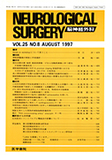Japanese
English
- 有料閲覧
- Abstract 文献概要
- 1ページ目 Look Inside
I.はじめに
近年,らせんCTを用いた3次元CT血管造影(3D—CTA)は頭蓋内血管病変の診断・評価に優れた検査法として認識されつつある.特に,最近では画像精度が向上し,その臨床的有用性が強調されている.今回われわれは,neck clipping不可能であった破裂椎骨動脈瘤に対しproximal clippingを行い,その手術前後において3D-CTAを行い,動脈瘤の消退および,椎骨脳底動脈系の血行動態の変化につき脳血管撮影と比較して評価を行ったところ,興味ある知見を得たので,若干の文献的考察を加え報告する.
At present, intra-arterial angiography remains the gold standard for most cerebrovascular problems. Re-cently, three-dimensional computed tomographic angio-graphy (3D-CTA) has been reported as a screening me-thod for the diagnosis of cerebrovascular disease. This imaging modality uses the information obtained on a contrast-enhanced CT scan to generate three-dimension-al images of the cerebrovascular system. We perform-ed 3D-CTA in the preoperative and postoperative eva-luation of patients undergoing proximal clipping of rup-tured vertebral artery aneurysms in addition to conven-tional cerebral angiography. In this study, the value of 3D-CTA after proximal clipping of ruptured vertebral artery aneurysm was evaluated retrospectively. Six patients were examined with a spinal CT (HITACHI CT-W 3000) after intravenous bolus injec-tion of 100ml contrast material (Iohexhol 300mgI/ml)-at the rate of 2ml/s with a 25 second pre-scanning de-lay. The images of 3D-CTA were reconstructed using a new 3D-volume-render (Voxel Transmission) tech-nique.
The ages of the six patients ranged from 33 to 61 years and five cases were males and one case was female. Only one patient had a saccular aneurysm and the other five had fusiform aneurysms. Two patients underwent emergency operations within 4 days, and the other four had delayed operations. The outcome was good recovery in five cases and severe diability in one case.
Postoperative conventional cerebral angiography de-monstrated no delineation of the aneurysms in five cases. These results correspond well to postoperative 3D-CTA. Postoperative conventional cerebral angiogra-phy could not be performed in only one patient, but the aneurysm was visualized on the third postoperative 3D-CTA.
Proximal clipping is still one of the therapeuic op-tions for ruptured vertebral aneurysms, but some re-ports emphasized the possibility of rebleeding after prox-imal clipping of vertebral artery aneurysms. The re-bleeding occurred within 1 week after proximal clip-ping in 6 of 9 cases (66.7%), and the prognoses were extremely poor. Therefore, in patients selected for prox-imal clipping, it is necessary to undertake postopera-tive evaluation of the aneurysm within one week after proximal clipping.
3D-CTA is minimally invasive and can be easily per-formed repeatedly, even if the patients are in a poor condition. In conclusion, 3D-CTA is very useful espe-cially for evaluation of ruptured vertebral artery aneurysms following proximal clipping.

Copyright © 1997, Igaku-Shoin Ltd. All rights reserved.


